|
Biographical Log of Michael Furstner - Page 74
2008 ||
2009 :
Jan |
Feb |
Mar |
Apr |
May |
Jun |
Jul |
Aug |
Sep |
Oct |
Nov |
Dec | Page :
Previous |
Next |
Most Recent -
Next -
Previous -
Page 1 -
Photos -
Index -
Topics -
MP3s -
Jazclass Links
Friday March 6, 2009
(diary, woodprints, spacetime, Doppler effect)
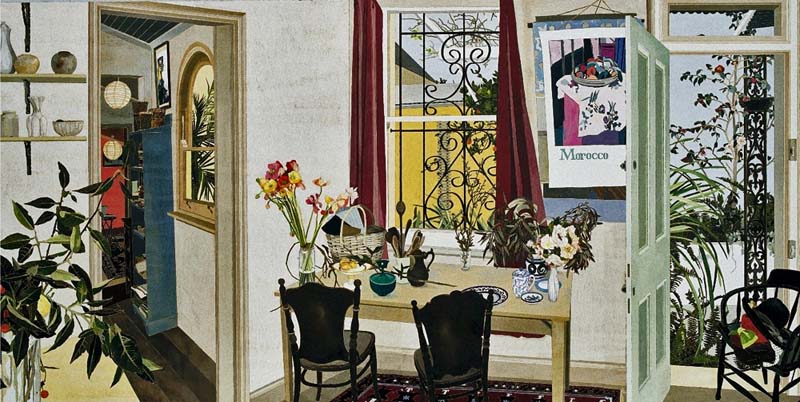 Babette sent me a photo of her addressing the Convention in Hong
Kong a few weeks ago. I have included the image on the appropriate page, showing that she can be
serious too !!
Babette sent me a photo of her addressing the Convention in Hong
Kong a few weeks ago. I have included the image on the appropriate page, showing that she can be
serious too !!
On the news last night was a segment about the Australian artist Cressida Campbell and I was instantly blown away
with her work. Her elaborate woodblock prints are colourfull and drawn in
exquisite detail. The QUT Art Museum in Brisbane is having an exhibition
of Cressida's work which opens today and will run until April 17. I
will go there together with Babette after my return from Adelaide.
Awareness 28 continues from March 5
The description of spacetime being like a block of ice (as I
outlined yesterday) would
perhaps reinforce a religious person (who believes in a Personal God)
in his belief in Predestination, or a non religious one in a degree
of so called determinism.
It is obvious that the various
laws of nature and the universe have a determined unavoidable cause and
effect about which we (as human beings) have no control over
whatsoever. For example it is clear that our solar system has a limited
and finite life. In about 5 billion years the sun will have burnt
itself out and will explode taking all its satellite planets with it.
But at the level of one's individual life I personally believe we
have a great deal of freedom to act and live as we choose, rather than
along a predetermined fixed course of action. How this fits in with my
layman's view of spacetime I cannot explain, apart from saying that the
true nature of spacetime is simply way beyond comprehension and
imagination of the limited human mind. But enough of this. I let you to
ponder over these thoughts and make up your own mind.
Writing yesterday's story
about John, Pete and Max, the Doppler effect suddenly came to mind. I am sure you
are familiar with it. Say you are standing along the road while a car
is approaching. Its speed towards you changes the wavelength and
frequency from its engine noise (to YOUR ears) to a higher than its actual pitch.
Then, as soon as the car passes you, its pitch instantly drops (again to your ears' perception) as it
moves away from you.
Astronomers use the Doppler effect to determine
the speed and direction of stars and large glowing meteorites. When its
observed light moves towards the (low frequency) red of the spectrum
(a so called "red shift") it reveals that the star is moving away from us. If on the other
hand the light is shifted to the (higher frequence) blue of the
spectrum (a so called "blue shift") the object is moving towards us.
As a layman I see a resemblance of (sort of) a Doppler effect in
spacetime. On the diagram below, Pete is moving towards me at high
speed from my distant future. As Pete moves closer he traverses ever
(for me) closer future points. For an instant he joins my NOW slice,
then moves away deeper into my past.

Pete, throughout his travel remains in his own NOW slices, but from my
perspective he moves from my high frequency (?) future into my lower
frequency (?) past. Just like a Doppler effect. Interesting ?
On earth this effect is always minute of course, but it does happen. When you are standing on a road side and a car approaches you its driver is a fraction of a millisecond ahead of you in time. As soon as it passes by the driver lives fractionally in your past. The same happens when a airplane is flying overhead. In such case the time difference is slightly larger.
Awareness continues on March 19
Most Recent -
Next -
Previous -
Top -
Page 1 -
Photos -
Index -
Topics -
MP3s -
Jazclass Links
Saturday & Sunday March 7 & 8, 2009
(diary, French morals, passion, emotions, Spinoza's philosophy)
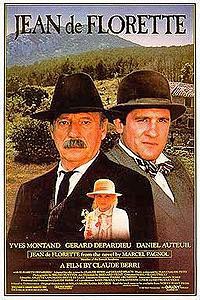 The cramp in my left leg has gradually disappeared, perhaps partly as
a result of the magnesium tables (taken on my sister's advice). I also
picked up a cold a few days ago, which followed its usual path from
nose to throat to chest, where it now sits rumbling. I therefore have
not been swimming for a few days, but still went for my lunch and read
at the Surf Club.
The cramp in my left leg has gradually disappeared, perhaps partly as
a result of the magnesium tables (taken on my sister's advice). I also
picked up a cold a few days ago, which followed its usual path from
nose to throat to chest, where it now sits rumbling. I therefore have
not been swimming for a few days, but still went for my lunch and read
at the Surf Club.
I have always had a talent, creative gift (not a skill, as it can't be
acquired by learning) of finding connections between different facts,
events, observations. This has been useful (and set me apart) during
my work as a geologist and later as a music educator. Thinking
creatively also enhances my everyday experiences (especially since
writing my Blog) adding greater stimulation and interest to my life.
Connections and ideas just seem to pop up into my mind spontaneously.
It is as if facts I read, observations, experiences, floating around
in my mind, miraculously find each other and effortlessly form
connections from which ideas can sprout.
Today three recent items are involved in such a
process. They are :
- Fire in the Blood by Irène Némirovsky which I just
finished reading.
- The French double movie
Jean de Florette and Manon des Sources I watched on Friday night,
with great performances by
Yves Montand, Gérard Depardieu, Daniel Auteuil and Emmanuelle Béart.
Both films are 1986 versions of the original film (1952) and books
(1964) by Marcel
Pagnol.
- A snippet of the philosophy of Baruch Spinoza I came across about a week ago.
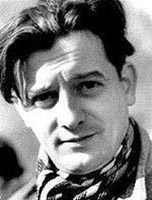 Pagnol's life (1895-1974) overlaps that of Némirovsky (1903-
1942), both experiencing first hand the two World Wars and French
social life in the country during that period.
The Némirovsky's book and the two films have three
important elements in common.
Pagnol's life (1895-1974) overlaps that of Némirovsky (1903-
1942), both experiencing first hand the two World Wars and French
social life in the country during that period.
The Némirovsky's book and the two films have three
important elements in common.
Firstly they present a
scathing indictment on the appalling French morals and manners
especially in small country villages. Everybody cared solely about
him/herself, with little or no regards for anyone else.
Scandals
and tragedies were known or observed by everybody but no one spoke out
or lent a helping hand. "Strangers" from other villages or the "city"
were ignored, discriminated against or pestered out.
As both
authors have expressed this so emphatically it surely must have been
true, and perhaps still is (and not just in France).
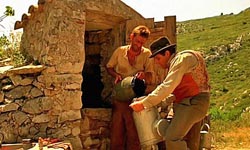 Secondly the Némirovsky's book and the two films both
deal with passion. For Némirovsky it is the passionate
love of the young, the "fire in their blood". Nothing can stand
in its way.
Secondly the Némirovsky's book and the two films both
deal with passion. For Némirovsky it is the passionate
love of the young, the "fire in their blood". Nothing can stand
in its way.
In Pagnol's work it is initially the all
consuming passion for nature and living from the land of the city boy and
hunchback Jean de Florette. But local farmer Ugolin manages to
frustrate Jean's endeavours by treacherous means, and, after Jean's
tragic death, acquires the land to fulfill his own passion of growing
carnations. This passion is destroyed however when Ugolin falls in love
with the beautiful Manon, in the end leading to his suicide.
Spinoza himself could have written Pagnol's story
as it exemplifies his Proposition VII in Chapter 4 of his Ethics,
which states that "An emotion can only be
controlled or destroyed by another emotion contrary thereto, and with
more power for controlling emotion." An emotion, according to
Spinoza, can never be controlled or destroyed by reason.
This is clearly the case with Ugolin's passion for carnations which is totally oblitterated by his sudden emotions for Manon.
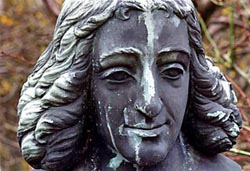 The third element that Némirovsky and Pagnol's works have
in common is the most intriguing and perhaps most important one. Each
in their story feature and old man, the narator Sylvestre
("Sylvio") in "Fire in the Blood" and César Soubeyran
("Papet", Ugolin's uncle) in Pagnol's story.
The third element that Némirovsky and Pagnol's works have
in common is the most intriguing and perhaps most important one. Each
in their story feature and old man, the narator Sylvestre
("Sylvio") in "Fire in the Blood" and César Soubeyran
("Papet", Ugolin's uncle) in Pagnol's story.
Both men had experienced in their
younger years a passionate affair with a woman, which ended abruptly
when circumstances forced them to move away, unaware that they left the
women behind pregnant. Upon the men's return both women had married.
The men grow old but their un fulfilled passion remains with them
throughout their lives, causing a most surprising ending to the plots
in the respective stories.
This is where Spinoza once again comes to my mind. For the
passions of both men live on because there has never been another
stronger emotion in their lives to destroy and replace it. Had they
returned and married the woman, their marriage would either have been a
success (likely with Papet) or petered out as a failure (perhaps in the
case of the restless Sylvio). But the absence of a firm closure leaves
their emotions alive to the very end.
The observant reader of my Blog will perhaps realise that the above
situation is very much like my own. I too have in my life an aborted
passion (generated 30 years ago), an emotion which never truly has been
resolved. My reason has tried hard to push it back but cannot destroy
it. Will it ever be resolved ? I don't know, but it does add an element
of spice, of depth to ones life, and that, I find, is not a bad thing.
Most Recent -
Next -
Previous -
Top -
Page 1 -
Photos -
Index -
Topics -
MP3s -
Jazclass Links
Monday & Tuesday March 9 & 10, 2009
(diary)
 Monday is overcast with occasional rain. The trees around ThreePonds are swaying
restlessly in the wind. Cyclone "Hamish", which formed over a week ago in the Pacific
Ocean just NE of Cairns, has been slowly traveling south along the Queensland coast.
Coastal towns as far south as Noosa (45 km to the north of us) are preparing for it,
cleaning up back yards, emptying caravan parks.
Monday is overcast with occasional rain. The trees around ThreePonds are swaying
restlessly in the wind. Cyclone "Hamish", which formed over a week ago in the Pacific
Ocean just NE of Cairns, has been slowly traveling south along the Queensland coast.
Coastal towns as far south as Noosa (45 km to the north of us) are preparing for it,
cleaning up back yards, emptying caravan parks.
Tuesday morning I get up very early and at 5 AM am driving through pouring rain
to Brisbane Airport. I get there in just over an hour, park my car and check in with Jetstar airlines.
Seating in budget airlines is always very tight, except for two rows in the middle
of the aircraft where the emergency exits are. For an extra $30 you can reserve one of
these seats online, giving you an extra 20 cm (8 inches) of leg room. For a tall guy like
me it is the difference between sitting cramped up in agony, or a very comfortable
flight all the way. I do that now for every flight I take.
We take off in time, have a very smooth flight and arrive in 2 hours in Adelaide, 20
minutes ahead of time, thanks to a nice push in the back from "Hamish".
Weather in Adelaide is wonderful. Sunny with a clear blue sky and a day temperature in
the mid 20s. Could not be better. I pick up my small hire car, then drive into town to
the under cover Adelaide Markets. A visit here is like a cultural event, and a fixed
part of the weekly routine of the locals. Fresh fish, meat, cheeses, fruit, vegies,
flowers in over a hundred stalls, open most days. Also cafes, bars, eateries
everywhere. I have an early lunch at one of the Asian cafes ("Chinatown Cafe") I
remember from the past. The food is still great and very cheap.
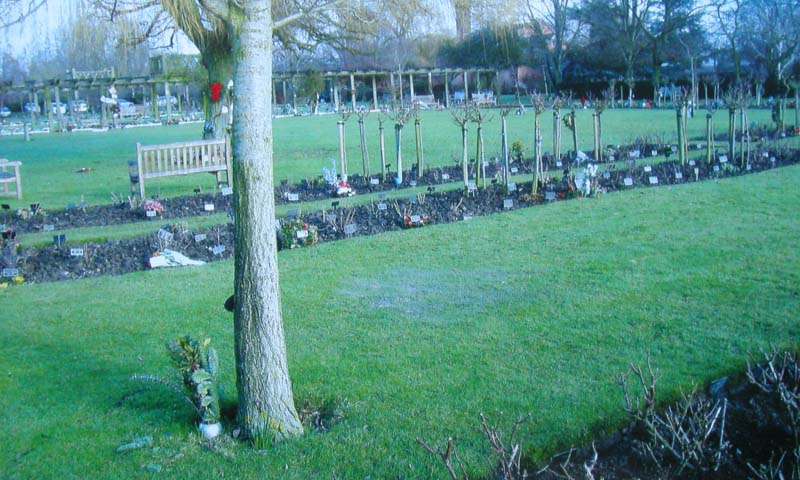 In the afternoon I drive down to the coast to visit Irene van Amsterdam. As promised I
sort out Shirley's jewelry for her and collect the documents for doing her Dutch tax
return. We have several brandys (her medicine for reaching 97) while I watch the ocean
from her large front window. Rosie, an acquaintance from the past, comes in with some nice
cake. She is a hair dresser and used to do my hair way back in the 80s. Rosie visits
Irene often and does little chores for her, like buying cakes and bottles of brandy. She
also cooks the occasional meal for Irene.
In the afternoon I drive down to the coast to visit Irene van Amsterdam. As promised I
sort out Shirley's jewelry for her and collect the documents for doing her Dutch tax
return. We have several brandys (her medicine for reaching 97) while I watch the ocean
from her large front window. Rosie, an acquaintance from the past, comes in with some nice
cake. She is a hair dresser and used to do my hair way back in the 80s. Rosie visits
Irene often and does little chores for her, like buying cakes and bottles of brandy. She
also cooks the occasional meal for Irene.
Later I arrive at Tony Putnam's place, an old friend from bridge and my host for
these few days in Adelaide. In the evening, after a quick meal on the way, we drive to
the bridge club, still going strong 25 years after I started it back in 1984. Several of
my earliest students are still there and it is great to see them all again.
Comments -
Most Recent -
Next Page -
Previous -
Top -
Page 1 -
Photos -
Index -
Topics -
Jazclass Links
Copyright © 2009 Michael Furstner
|







